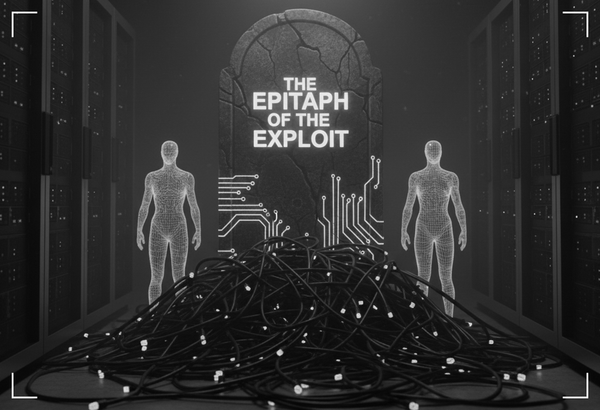Understanding the digital twin concept [Mirroring Reality - Ep.1]
Mirroring reality: the rise of digital twins [Ep.1]
![Understanding the digital twin concept [Mirroring Reality - Ep.1]](/content/images/size/w1200/2025/06/32d436f6-0ed9-49ff-b1d8-71091c2c0dc4_1920x1080.png)
The concept of a digital twin has emerged as a transformative technology, offering a virtual replica of real-world entities and systems. This digital representation serves as a dynamic mirror, continuously updated with real-time data, enabling a deeper understanding, analysis, and optimization of its physical counterpart. Digital twins are reshaping how organizations across various industries operate, innovate, and make strategic decisions by bridging the physical and digital realms
Defining a digital twin reveals its multifaceted nature. Gartner defines a digital twin as "a digital representation of a real-world entity or system," emphasizing its role as an encapsulated software object or model that mirrors a unique physical object, process, organization, person, or other abstraction. This definition underscores the broad applicability of digital twins, extending beyond tangible assets to encompass intangible elements like business procedures and organizational structures. The inclusion of "process," "organization," and "person" in definition signifies the technology's versatility and its potential to address challenges across diverse domains, moving beyond traditional engineering or manufacturing applications primarily focused on physical machinery.
IBM provides another insightful definition, stating that "a digital twin is a virtual representation of an object or system designed to reflect a physical object accurately. It spans the object's lifecycle, is updated from real-time data and uses simulation, machine learning and reasoning to help make decisions". This definition highlights the temporal dimension of a digital twin, emphasizing its relevance throughout the entire lifecycle of the mirrored entity. Furthermore, it points to the sophisticated analytical capabilities embedded within digital twins, including simulation, machine learning, and reasoning, which enable proactive decision-making and optimization. The emphasis on the "lifecycle" suggests that a digital twin is not a static model but rather an evolving entity that captures the history and current state of its physical counterpart. The mention of advanced analytical techniques indicates the potential for sophisticated analysis and prediction, transforming raw data into actionable intelligence.
Wikipedia offers a comprehensive perspective, describing a digital twin as "a digital model of an intended or actual real-world physical product, system, or process [...] that serves as a digital counterpart of it for purposes such as simulation, integration, testing, monitoring, and maintenance." It further elaborates that a digital twin is a "set of adaptive models that emulate the behavior of a physical system in a virtual system getting real time data to update itself along its life cycle". This definition underscores the practical utility of digital twins across various stages of an asset's or process's existence, from initial design and testing to ongoing monitoring and maintenance. The term "adaptive models" reinforces the dynamic nature of digital twins, suggesting their capacity to evolve and learn over time based on real-world feedback. The explicit listing of purposes such as "simulation, integration, testing, monitoring, and maintenance" highlights the versatile applications of this technology throughout the lifecycle of a product or system.
Expanding the scope beyond physical assets, Celonis introduces the concept of a "process digital twin" or "Digital Twin of an Organization (DTO)," which focuses on understanding and optimizing business processes using data derived from IT systems. This demonstrates that the fundamental principles of digital twinning – creating a virtual representation with a continuous data connection – can be effectively applied to analyze and improve organizational efficiency and decision-making. The introduction of these concepts signifies a broadening of the digital twin paradigm beyond tangible entities to encompass the analysis and optimization of business workflows and organizational structures.
The evolution of the digital twin concept reveals a rich history. Wikipedia notes that the broader idea predates the formal terminology, with David Gelernter's 1991 book "Mirror Worlds" anticipating the concept of digital representations mirroring the real world. The term "digital twin" itself was first coined by Hernández and Hernández in 1997. This historical context indicates that the underlying principles have been under consideration for several decades, suggesting a maturing field with a growing body of knowledge and practical applications.
Akselos points to an even earlier origin, stating that NASA created the first digital twin in the 1960s. This origin within the demanding environment of the space program underscores the early recognition of digital twins as a valuable tool for managing complex assets where real-time monitoring and simulation are critical. The fact that an organization renowned for its intricate engineering projects pioneered this technology highlights its potential for managing highly complex systems.
The value proposition of digital twin technology is compelling. IBM asserts that digital twins enable us to "understand the present and predict the future," thereby assisting engineers and operators in comprehending not only how products are currently performing but also how they will behave in the future. This dual capability of providing real-time insights and future predictions is a core advantage, empowering proactive decision-making and optimization. The ability to gain both a current understanding and a future outlook allows organizations to anticipate potential issues and opportunities, leading to more informed and strategic actions.
AWS emphasizes a range of tangible benefits, including improved performance, predictive capabilities, remote monitoring, and accelerated production time. These advantages highlight the potential for digital twins to enhance efficiency, reduce costs, and improve responsiveness across various operational aspects. The listing of specific benefits provides concrete examples of the value that digital twins can deliver, making a strong business case for their adoption.
Furthermore, a McKinsey report indicates the potential for significant business impact through digital twin implementation, including a "remarkable revenue increase of up to 10%, a substantial reduction of time to market by as much as 50%, and a remarkable improvement in product quality of up to 25%". These statistics provide compelling evidence of the substantial return on investment and the significant impact on key business metrics that can be achieved through the strategic deployment of digital twin technology.
[Next episode - Deconstructing the digital twin: core components and architecture]



